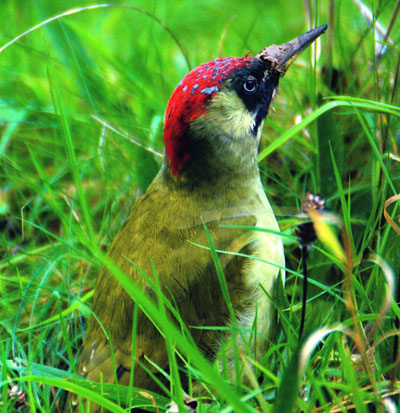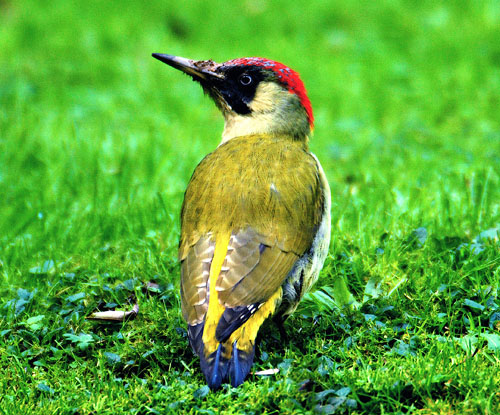
BIRDS OF THE SULGRAVE AREA
(Home)
GREEN WOODPECKER (Picus viridis)


The green woodpecker is the largest of our three native species of woodpecker. With its greenish colouring, its black eye-patch and moustache and its red crown, it is unmistakable. It is most often seen on lawns and other grassy areas searching for its favourite food – ants – and will tear out small patches of turf in its keenness to excavate an ants’ nest. Its call, too, is easily identified: a loud harsh cackling laugh, from which comes its popular name, the Yaffle. Like that of other woodpeckers, its flight is undulating: after each short series of wing-flaps, it closes its wings against its body and so temporarily loses a little height. The two sexes are almost identical in appearance, except that the male’s “moustache” has a small red centre; the bird in the photo, lacking this, is a female. Young green woodpeckers are of the same colour as their parents, but are heavily spotted.
Green woodpeckers do not often “drum”. If you hear drumming, especially in spring, it is probably a great spotted woodpecker (Dendrocopus major) claiming its territory. This also is the black-and-white bird, with red rump and (in the male and young but not the female) a red cap, which visits the nut-container in your garden.
The third in our native species, the lesser spotted wood pecker (D. minor) is rarely seen. It is of sparrow size, and mainly frequents the higher tree canopies.
Photo: John Sheppard. Text: George Metcalfe.
See Bird Archive for other birds in this series.